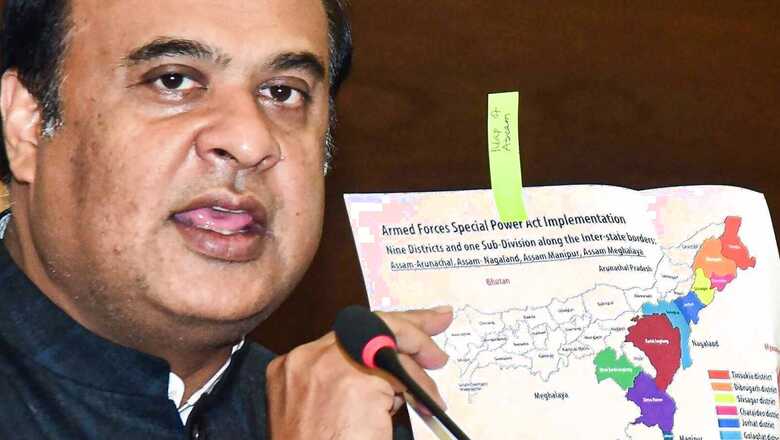
views
The historic and bold decision by the Government of India to reduce the jurisdiction of the Armed Forces (Special Powers) Act (AFSPA) in Nagaland, Assam and Manipur is a result of massive reduction in insurgency-related incidents, casualties of civilians and security forces.
According to sources, while the government was working on maintaining the law and order situation in these states, development and rehabilitation are also on.
Also, the central government has successfully signed agreements to ensure peace in Northeastern states, which helped reduce insurgency. The past three years have seen the signing of the Bru-Reang refugee agreement for resettlement in Tripura, Bodo Accord and Karbi-Anglong Agreement in Assam and NLFT (SD) Agreement to rehabilitate militants in Tripura.
According to the data compiled by the home ministry, the Northeastern states recorded a total of 824 incidents of insurgency when the Narendra Modi government came to power, which came down to 20 in the next five years. Also, casualties of civilians, which were 212 in 2014, came to 2 by 2020.
Similarly, in 2015, 46 security forces personnel were killed due to insurgency, but in the next five years, the number was down to 5.
The Modi government held talks with groups who take the path of violence to seek resolution of their demands peacefully within the framework of the Constitution of India.
Another important aspect was that since 2014, a majority of the groups surrendered and others were left with limited cadre strength, which showed in the casualties of extremists. According to the data, a total of 181 extremists were eliminated by security forces in 2014 in the Northeast region. And due to consistent operations, in the next six years, forces eliminated close to 350 extremists.
From 2019, the number remained in single digits.
Here is the state-wise story.
ASSAM
The state saw a maximum number of insurgency incidents when the Modi government came to power in 2014. This year, a total of 246 incidents took place, which drastically reduced next year by more than 60%. The reduction was visible in the next five years and finally the number of incidents was in single digit by 2020.
Similarly, in 2014, a total of 168 civilians were killed by extremists. By 2018, the state saw a massive 96% reduction in civilian casualties in such incidents. In 2019, no civilian causality was reported by the government. In six years, from 2014, a total of 12 jawans of Indian security forces were killed, but security forces eliminated 2,013 extremists belonging to various groups.
The state government also told the Centre about the law and order situation, which was analysed before taking a decision on AFSPA.
This year, 246 militants belonging to the Tiwa Liberation Army (TLA) and United Gorkha Peoples Organisation (UGPO) surrendered and laid down arms. Now only two insurgent groups – United Liberation Front of Asom Independent (ULFA-I) and Kamtapur Liberation Organisation (KLO) – are still left.
NAGALAND
Nagaland has been consistently witnessing a massive reduction in the number of insurgency incidents in the past seven years. The state remained peaceful becoming one of the safest places in India now, as per crime data.
The data of Ministry of Home Affairs on Insurgency stated that in 2014, a total of 77 incidents of insurgency were reported by the government, which reached 102 the next year. From 2016, the number of insurgency incidents reduced and reached 15 in 2020. Similarly, from 2014 to 2019, 16 civilians were killed by extremists. In 2015, nine civilians were killed, while no civilian has been killed in Nagaland from 2019.
A total of 14 security personnel were killed in the operations. The highest number of troops killed due to insurgency in Nagaland was in 2015, when 9 jawans were killed. But in 2020, no jawan was killed. Also, in 2015, a total of 29 extremists were killed, which came down to nil by 2019.
MANIPUR
According to the data of Ministry of Home Affairs, by 2019, the number of incidents reduced by 82% in Manipur. Now, on an average, the state reports one incident in one week. The state saw close to 80% reduction in civilian killings by 2019. From 2019, no force personnel was killed in such incidents, which was as high as 24 in 2015. Meanwhile, from 2014 to 2019, security forces eliminated 107 extremists in Manipur.
Read all the Latest News India and Breaking News here




















Comments
0 comment